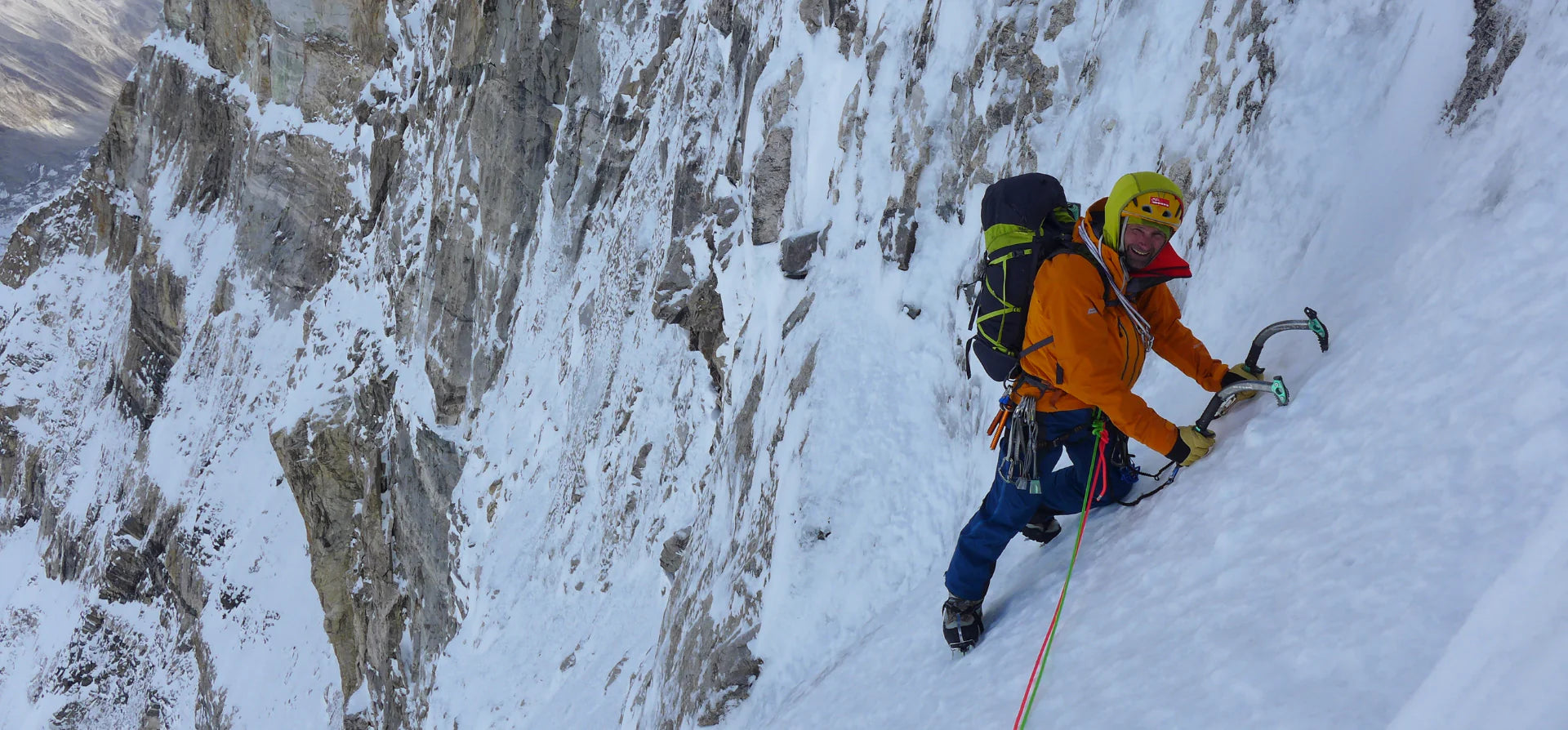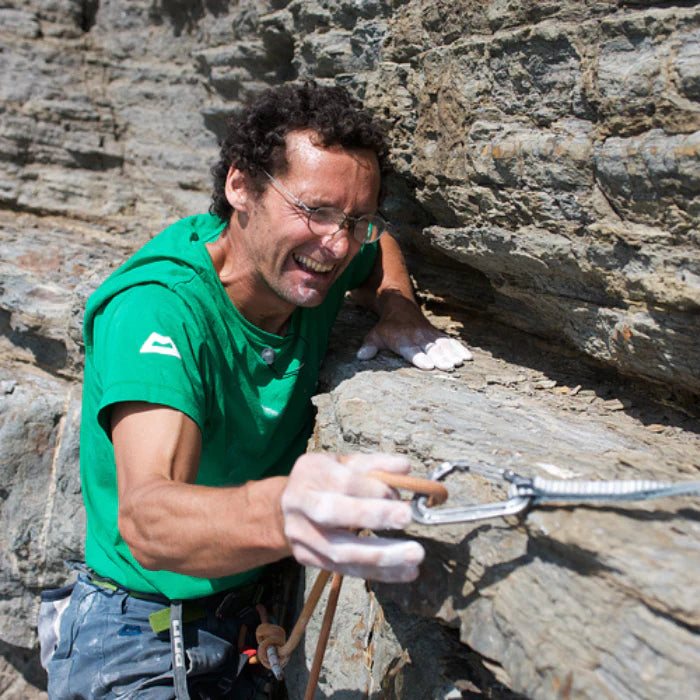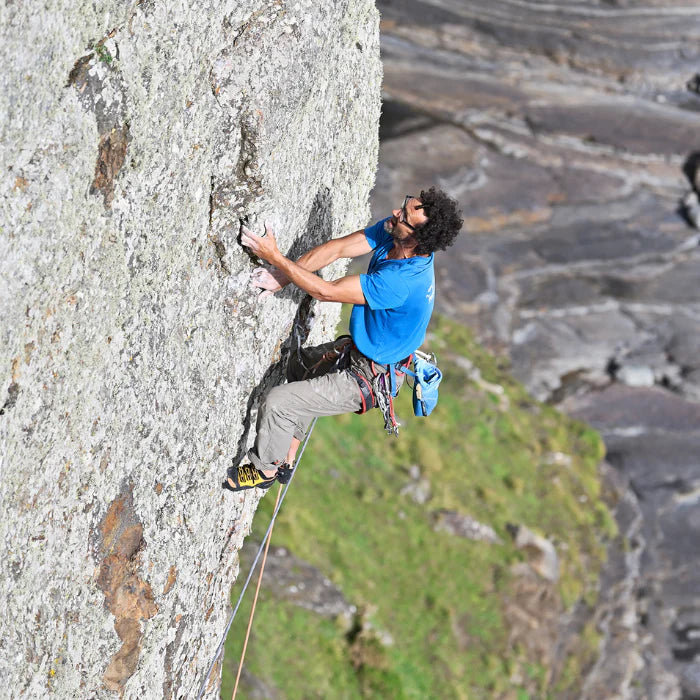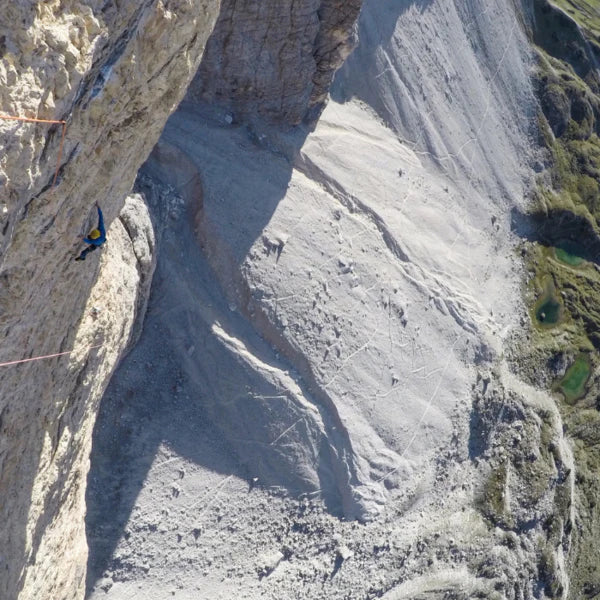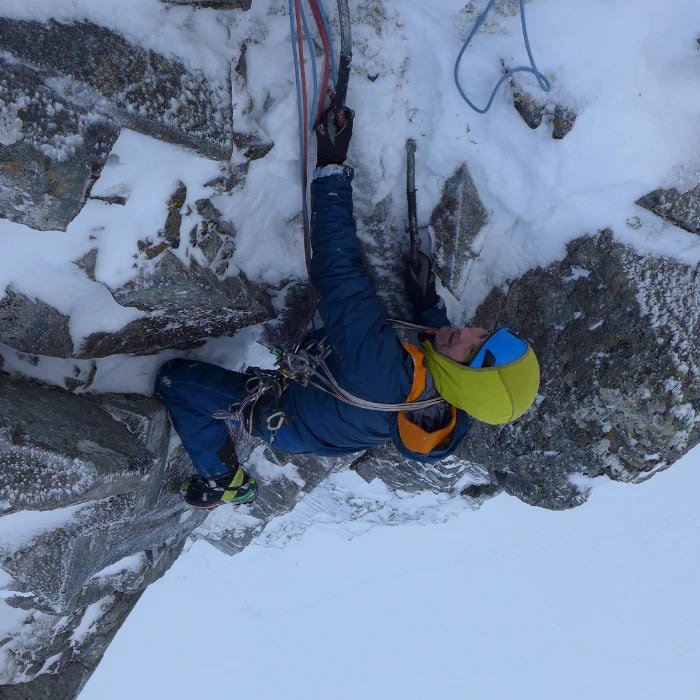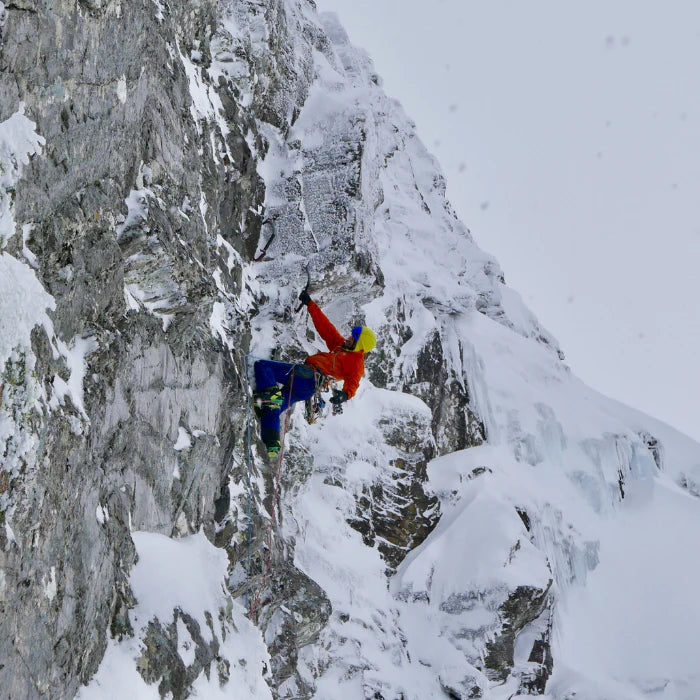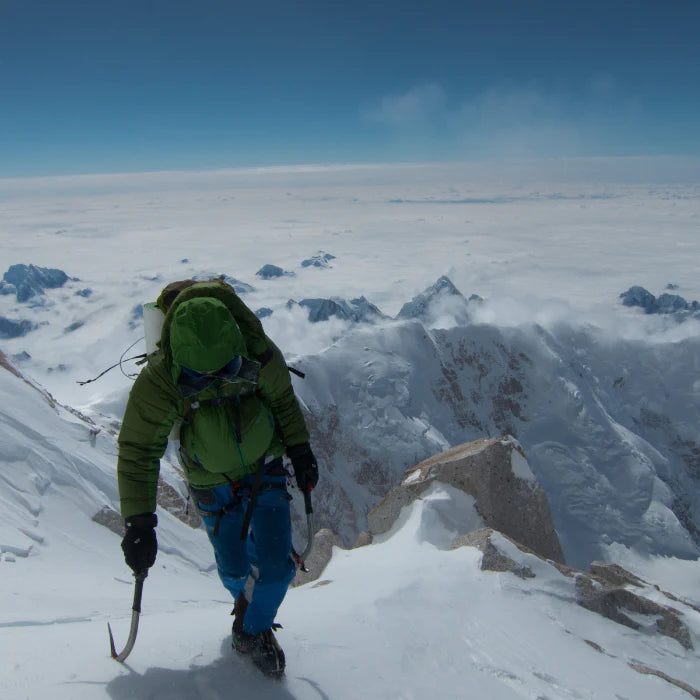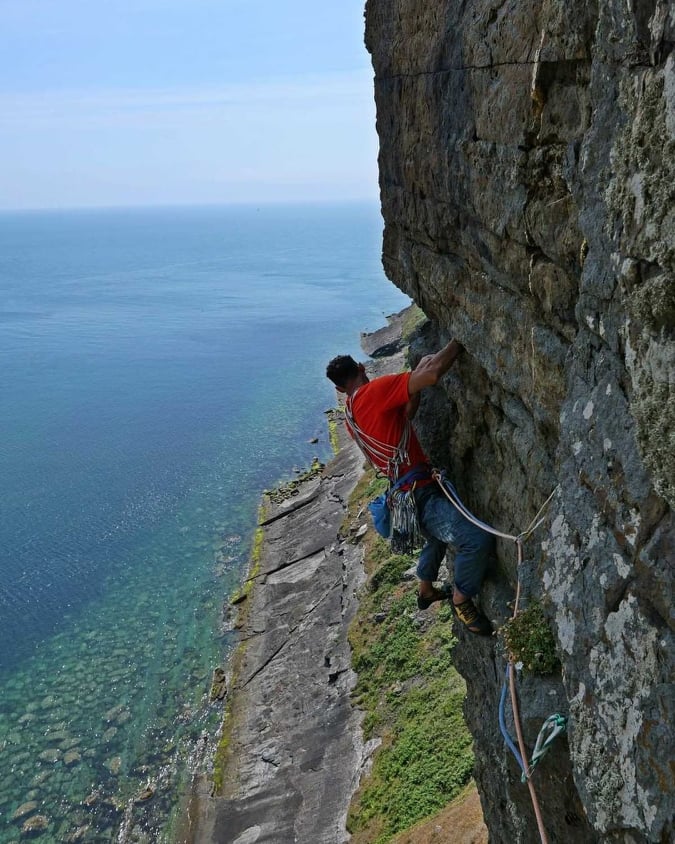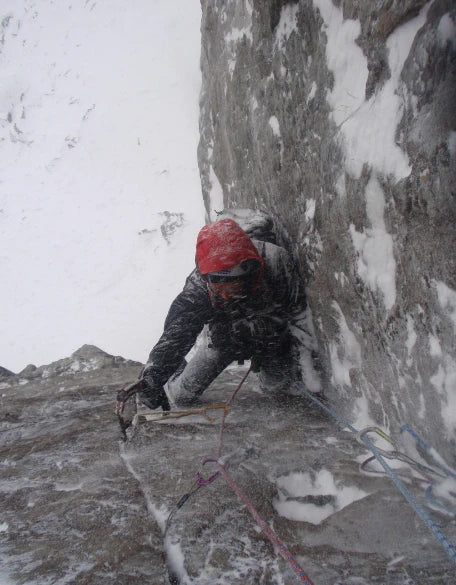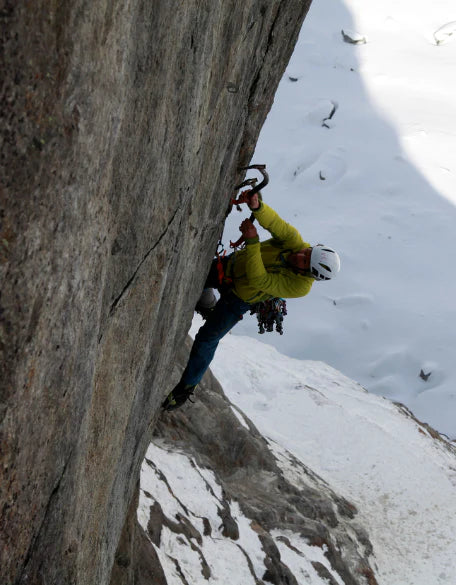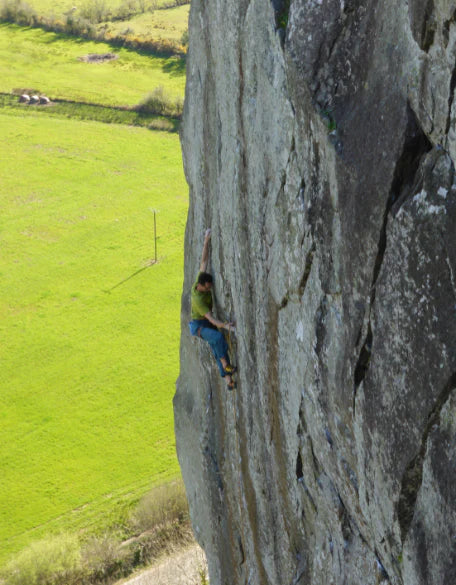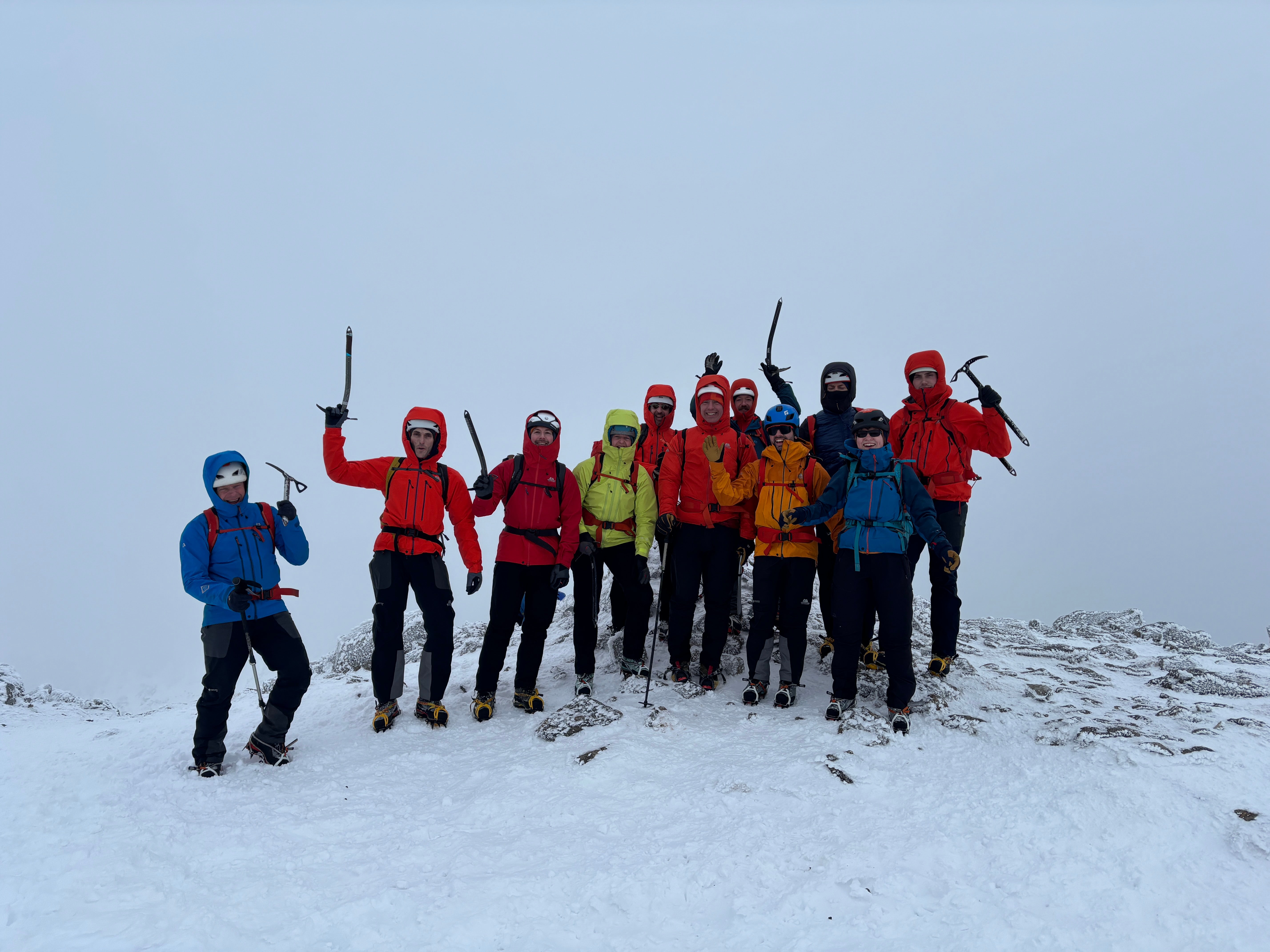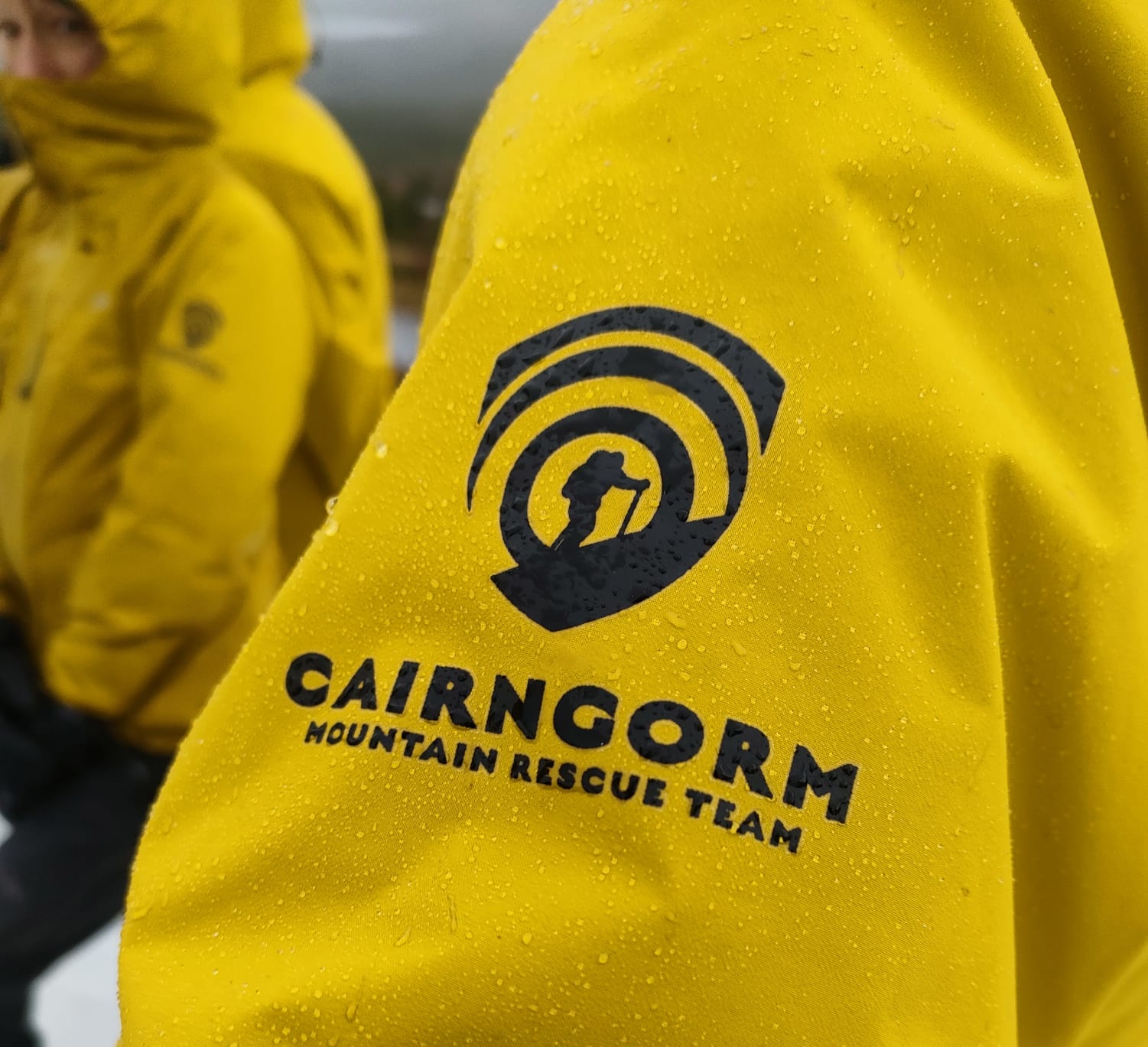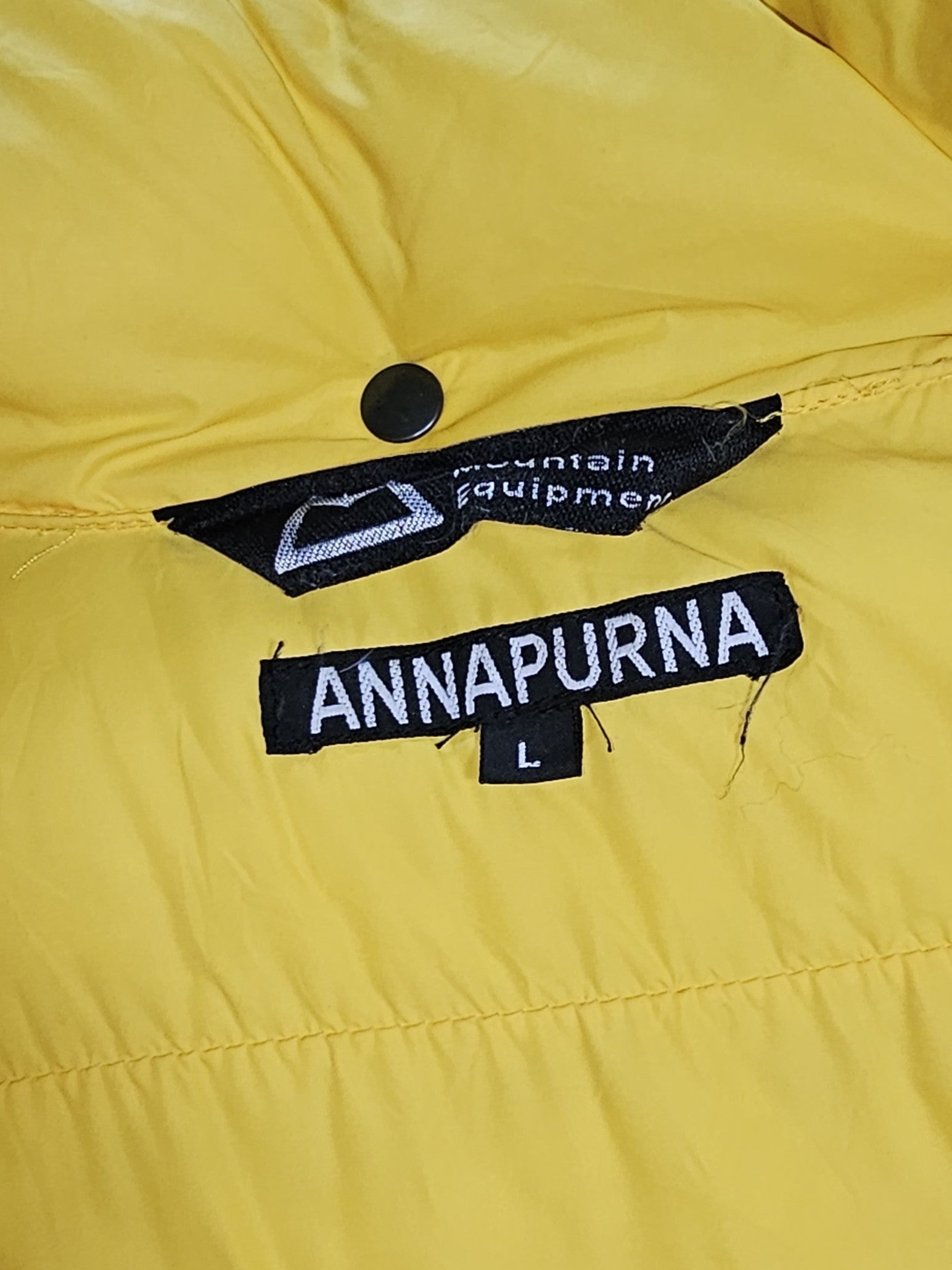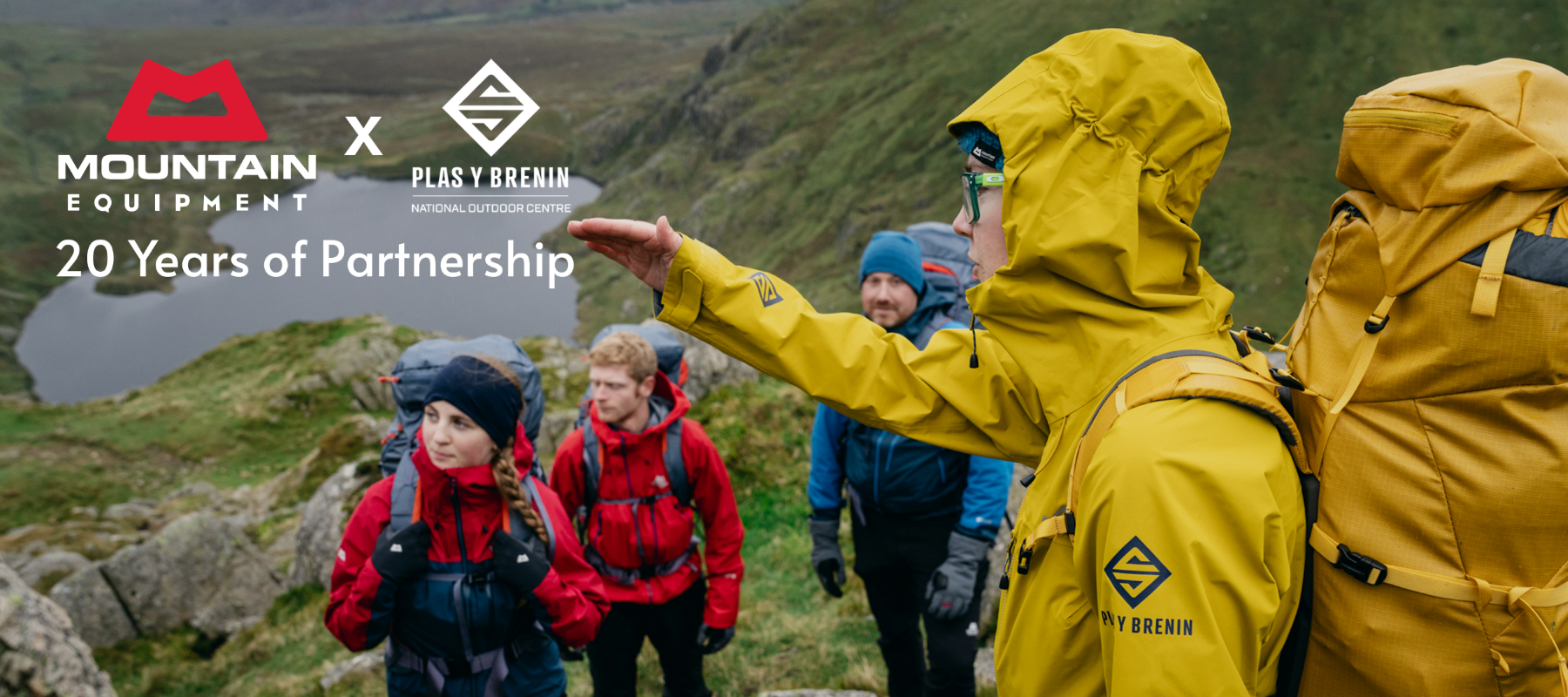Nick Bullock should need little in the way of introduction. One of Britain's finest alpinists and rock climbers, known for bold and audacious ascents, he is also a writer and occasional poet.
‘Write a climbing Bio and include what type of routes inspire you’ the folks at ME asked! I must admit, right or wrong, I don’t really get on with this type of thing, it feels akin to asking me to brag. Also, I feel it’s almost impossible for me to portray in words, what climbing means to me. How is it possible to avoid platitudes and cliches? How is it possible not to be a hypocrite?
And ‘What routes inspire’ is a difficult question, especially for a 55-year-old. If I were young, I would answer, most routes inspire; single pitch traditional rock, soaring 40m sport climbs passing tufa’s and pockets on perfect limestone. Multi-pitch rock on accessible mountains. The battle of Scottish winter mixed. Rock climbing on crumbling sea cliffs, rock climbing on edges battered by wind, or perfect pocketed Welsh Rhyolite. Climbing and exploring new routes on Alpine mountains and in the Greater Ranges. But, as my body becomes less able to do that which I ask of it, the routes that inspire now are the ones that enhance my life, but don’t destroy the future dreams, because for the ‘not so young’, but for someone who is still embroiled in climbing, there are always dreams and ambitions. And in a way, this returns to what climbing has always meant to me, and the closest I can come to explaining, would be; personal endeavour. The Middle English root of endeavour means to "put oneself in" or "do one's utmost," so if you endeavour to do something, you do it with earnestness and a fair amount of effort; add integrity and honesty to this, and in a nutshell, that is what climbing is for me.
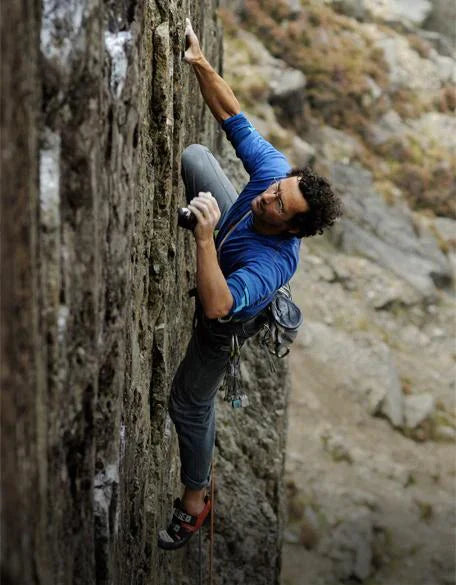
The routes that mean the most
In life I try not to be proud, especially of my climbs, because a meaning of the word ‘proud’ is, ‘Having or showing a high or excessively high opinion of oneself or one's importance.’ My climbs, on a local, national and global level are of no importance to anyone, but myself. Of course, on a person level, they mean a great deal, but to explain the complexities attached to a significant experience in a sentence, is impossible. For a person who has dedicated and sacrificed much in life to climb, these routes become way markers, experiences that affect and influence a life, before throughout and after.
A selection of climbs that fit the description above, but by no means a definitive list, would be: The Bells, The Bells and Hollow Man on North Stack Wall, Gogarth. The Croz Spur and the Colton/MacIntyre, Grande Jorasses, France. Quitaraju South Face and Fear and Loathing, Jirishanca, Peru. Sea of Vapours, Rocketman, Man Yoga, and the Real Big Drip, Canadian Rockies. Godzilla, Beinn Bhàn, Guerdon Grooves, Buachaille Etive Mor, Scotland. Slovak Direct, Denali, Alaska. Chang Himal North Face, Nepal. Nyainqêntanglha's South East Face, Tibet.
5 essential elements for a great day climbing
A great day climbing is subjective; what makes the day great for me, will be hell for others, and vice versa. There is also the fun factor to be considered, which, as I’m sure most people reading this will know comes in a scale of 1 to 3. 1 being actual fun at the time. 2 is not fun until you have returned to the valley/fireside/van/house/safety/pub, and then, and only then, it becomes fun. 3 is not fun at all, and shouldn’t actively be sought unless you are a tad deranged!
I have always enjoyed type 1 climbing, but in some form of self-flagellation, type 2 has more appeal. The type 2 climbing day is always with a good friend and generally has terror, skin of the teeth, almost failure, or actual failure, shivering, misery, fear, loose rock, thin ice, thin air, weight loss, run-out protection, but as long as my friend and I survive, (and occasionally succeed) all of these things make the type 2 fun climb memorable, and always good for recounting afterwards. Type 2 climbs become stuff of personal legend, a memory seared into the grey matter, even if what is recalled, doesn’t actually portray what actually happened.


